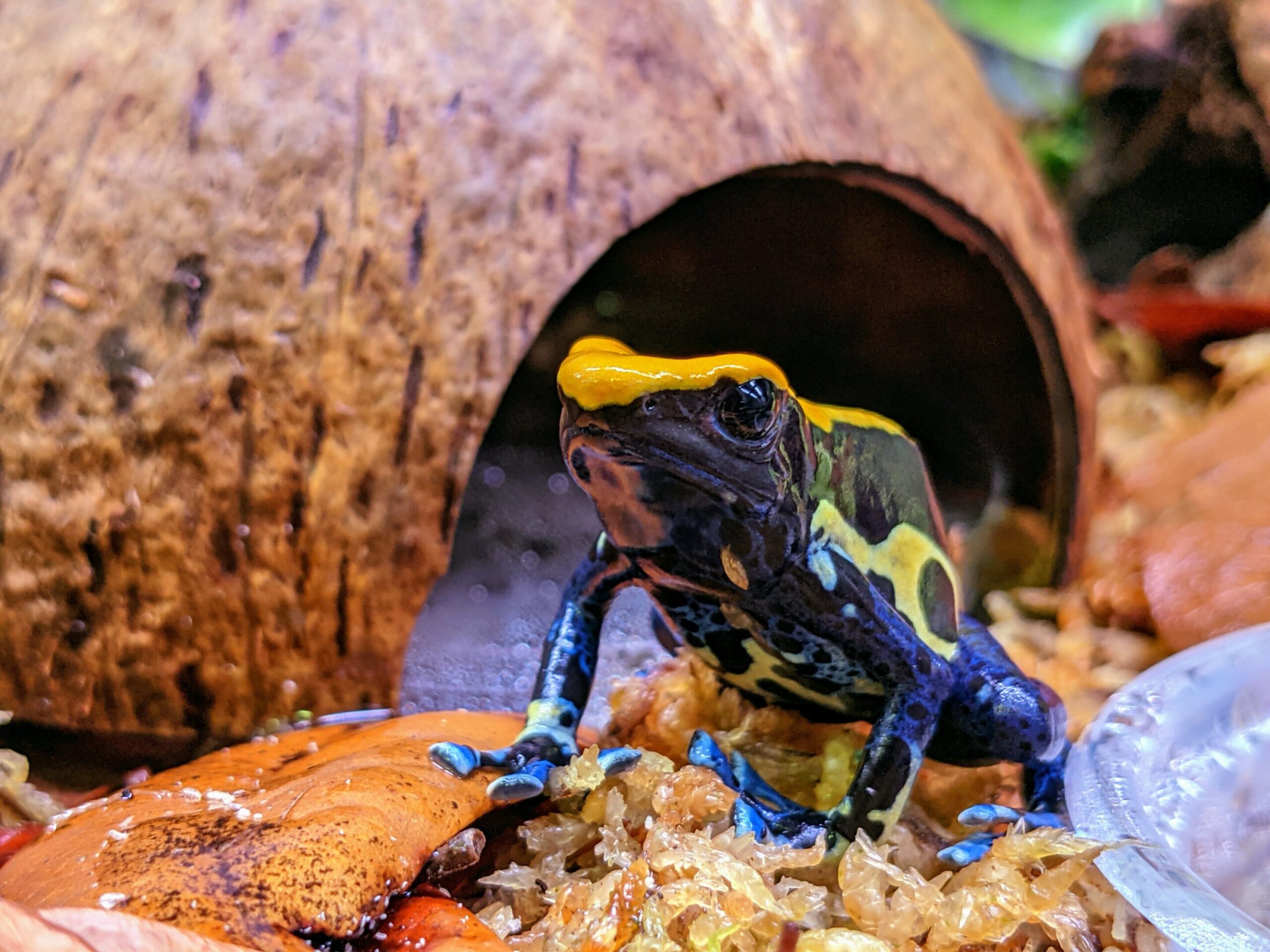

The toe tapping behavior of various amphibians has long attracted attention from researchers and pet owners. Despite being widely documented, the underlying functional role is poorly understood. In a new paper, researchers demonstrate that dyeing poison frogs modulate their taps based on specific stimuli. The research is published in the journal Ethology.
Dyeing poison frogs, Dendrobates tinctorius, have been shown to tap their posterior toes in response to a range of prey sizes, from small fruit flies to large crickets. In the present study, the researchers hypothesized that if the tapping has a role in feeding, the frogs would adjust their behavior in response to different environmental cues.
To test their hypothesis, the researchers recorded the frogs under varying conditions.
“I used the slow-motion camera on my iPhone to take minute-long videos of the frogs tapping. Afterwards, I went back to each video and counted the number of taps on each foot and how long they were visible since they were often hidden behind a leaf or the frog itself. I used those two numbers to get a ‘taps per minute’ on each foot and added them up,” said Thomas Parrish, a former undergraduate student in the Fischer lab (GNDP), and the first author on the paper.
The researchers first tested whether the frogs tapped their toes more when they were feeding. To do so, the researchers fed the terrariums with half a teaspoon of fruit flies and recorded their hunting.
“We already knew the answer to this, but it was great to see that the tapping increased in the presence of the prey,” said Eva Fischer, an assistant professor of integrative biology. “We wanted to ask ‘Why?’ and we wondered whether it had a function in prey capture or it was just a excitatory response like how dogs wag their tails because they are excited.”
The researchers then used different surfaces to see whether the tapping behavior changed when the frogs could see the prey but not feed on it. They placed the fruit flies in small, clear Petri dishes in the frogs’ home and measured the rate of toe tapping. They found that the frogs had an average of 50 taps/minute when they couldn’t access the flies compared to 166 taps/minute when they fed on free-moving flies.
“The idea was that if they’re excited, we might see something different based on whether they can catch the flies,” Fisher said. “These results suggested that since they kept trying to eat in both cases, the tapping was not just out of excitement.”
The researchers wondered, then, whether the toe taps were a form of vibrational signaling where the frogs used it as a way to startle or distract the prey before they fed. They used four different surfaces to test this question: soil, leaf surfaces, gel, and glass.
“Soil and leaves are natural substances, but soil is not very responsive while leaves are. On the other hand, gels are responsive and glass is not, but they are both unnatural surfaces to frogs,” Fischer said.
They found that while the tap rate differed depending on the surface, with leaves being the highest at 255 taps/minute and glass the lowest at 64 taps/minute, there was no difference in the total number of feeding attempts or success.
“Although we saw that the frogs ate in every context, it was exciting to see that they changed their behavior based on what they’re standing on,” Fischer said. “We were surprised, however, that we didn’t see a difference in how successful they were at eating. It’s possible that the experiment is like sending them to a buffet instead of what happens in the forest where the tapping may help in stirring the prey.”
The researchers are now hoping to understand what other stimuli might trigger this behavior. “Although we’ve conclusively shown that it is important in feeding, it could also be important in other contexts. For example, we have seen that the frogs tap more when there are other frogs nearby, so there may be a social aspect to it,” Fischer said.
They are also interested in studying the underlying biomechanical aspects of the muscles. “It would be cool to look at the anatomy and see how the muscles work,” Fischer said. “Ultimately, we could ask whether all frogs can tap their toes if they have the right muscles or whether there’s something special about the anatomy of poison frogs.”
More information:
Thomas Q. Parrish et al, Tap dancing frogs: Posterior toe tapping and feeding in Dendrobates tinctorius, Ethology (2024). DOI: 10.1111/eth.13465
Provided by
University of Illinois at Urbana-Champaign
Citation:
Why do dyeing poison frogs tap dance? (2024, May 28)
retrieved 28 May 2024
from https://phys.org/news/2024-05-dyeing-poison-frogs.html
This document is subject to copyright. Apart from any fair dealing for the purpose of private study or research, no
part may be reproduced without the written permission. The content is provided for information purposes only.